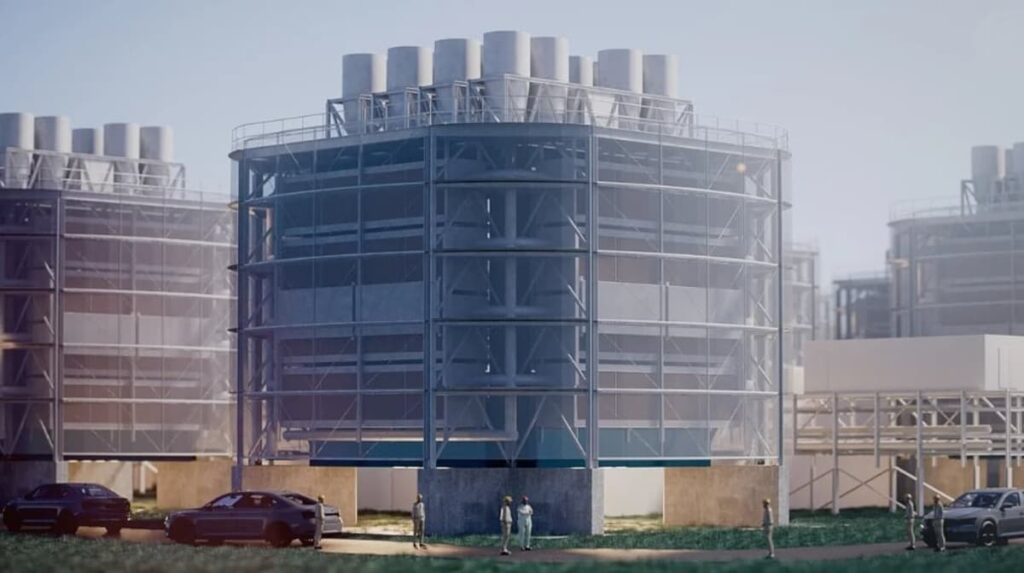Climeworks, the Swiss-based direct air capture (DAC) specialist, has unveiled its latest innovation, which scales up to megaton-scale capacities.
The so-called third-generation technology will be deployed initially in the United States, but over the past five years designs have been developed and validated, with the technology then being deployed at “secure project sites” around the world.
The first plant to use Gen III technology, as part of the megaton-scale Cypress DAC Hub project in Louisiana, is funded by the US Department of Energy and is expected to start construction in 2026.
The company also operates the world's largest commercial DAC factory, Orka, in Iceland, and recently launched an even larger factory, Mammoth, which is 10 times the size.
Climeworks is pursuing proposals for two more megaton hubs in the United States and is also actively developing projects in Norway, Kenya and Canada.

Source: Climeworks. Orca collector fan of the company.
“In parallel, we have been developing our third generation technology over the past five years,” says co-founder and co-CEO Jan Wurzbacher. “This development is based on real field data and allows for scaling up to megaton removal capacities.”
At the annual Carbon Removal Summit in Zurich, Climeworks will unveil its third-generation technology, which the company says doubles the carbon dioxide (CO2) capture capacity per module, halves energy consumption, extends material life and cuts costs by 50%.
Climeworks says its Gen 3 solution uses a structured sorbent material instead of the packed filter bed used in the previous generation, which increases surface contact with the CO2 and effectively captures more than twice as much CO2 as previous filters.
Climeworks says the new filter material uses half the energy and lasts three times longer than previous filters.
The company revealed that its team of experts has performed 5,000 CO2 capture and release cycles and spent 15,000 hours testing new adsorbent materials to optimise the system's durability and efficiency.
In addition to replacing the sorbent technology, the company transformed its collector concept from traditional stacker collector containers to a modular cube measuring 26 metres in length, width and height, and 22.5 metres in height.
The third generation technology also marks a milestone in the company's strategy to achieve up to 50% cost reductions by 2030, reducing costs to $250-350 per tonne captured, and $400-600 per tonne net removal.
One of the main challenges facing DAC is the high cost of carbon capture: current estimates range from $100 to $600 per tonne of CO2 captured, depending on the technology and scale of deployment.
Combining low-cost DAC with low-cost hydrogen could enable the production of carbon-neutral e-fuels in the short to medium term.
To accelerate decarbonization efforts, Climeworks recently launched Climeworks Solutions, a service that customizes carbon removal portfolios to fit a company's individual needs.
The company announced last month that it had achieved third-party certification of its carbon removal activities under the Puro standard, claiming to be a first in the DAC industry.

